The Ministry of Defence has stated that there is no formal target to reduce the number of senior military officers across the UK Armed Forces, according to a written update sent to the Defence Committee by Permanent Secretary David Williams on 11 July 2025.
The letter, addressed to Committee Chair Tan Dhesi MP, follows a public evidence session on 2 July where Williams appeared alongside Defence Secretary John Healey and Vice Chief of the Defence Staff General Dame Sharon Nesmith. It responds to a request for clarification on current military headcount levels and whether the MOD plans to reduce the number of star-ranked officers in the wake of wider departmental reforms.
According to the figures provided, there were 472 senior officers at one-star rank and above (NATO OF-6 and above) serving in the UK Regular Armed Forces as of 1 April 2025. These include Commodores, Brigadiers, Air Commodores and all higher ranks. The definition used excludes Full-Time Reserve Service personnel, Gurkhas, mobilised reservists, the Military Provost Guard Service, locally employed personnel and University Officer Cadets.
In addition, there were 87 officers of equivalent rank serving in the Future Reserves 2020 cohort, which includes mobilised Volunteer Reserves, High Readiness Reserves and those serving under Additional Duties Commitments or on Full-Time Reserve Service contracts. Sponsored Reserves are also included within the Army Reserve component of FR20.
In his letter, Williams wrote that “there are no formal targets to reduce senior military headcount” and noted that the figures were available in the quarterly service personnel statistics published by the government. The latest dataset referenced by the MOD covers the period up to 1 April and provides a breakdown of officer ranks across all services.
The clarification comes at a time when the MOD is engaged in a wide-ranging programme of reform following the publication of the Strategic Defence Review in May. The SDR outlined a shift towards more integrated multi-domain forces and a focus on readiness and resilience, with implications for force structure, command arrangements and staffing.
During the evidence session earlier this month, MPs pressed officials on whether the Department was planning to reduce the number of generals, admirals and air marshals in line with force size and budget pressures. The MOD has now made clear that while other reforms may affect how leadership is structured, there is currently no directive to reduce senior officer numbers as a specific objective.
Williams acknowledged in his letter that the timeliness of responses to the Defence Committee had not always met expectations. He committed to improving how follow-up information is shared, including the introduction of a protocol requiring answers within ten working days, or partial responses with timelines for completion if more time is needed.
The Committee is also due to receive a private briefing on NATO capability targets, following a commitment made during the same session. The MOD is liaising with Committee clerks to arrange this briefing.


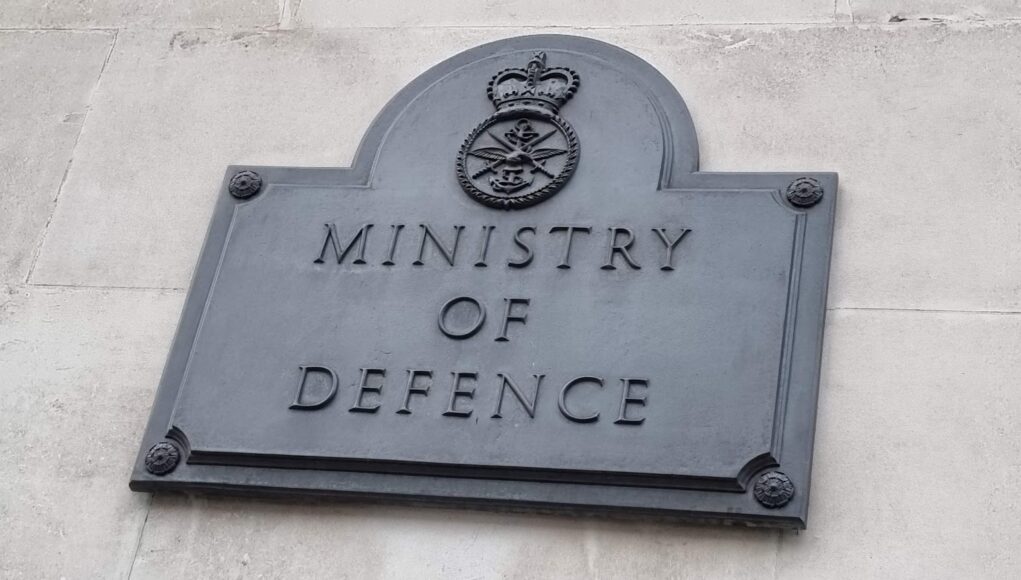
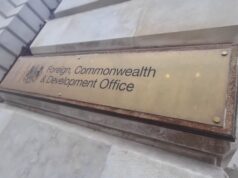


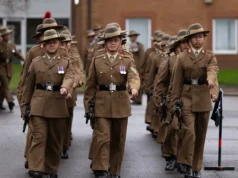
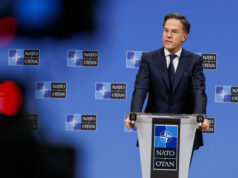
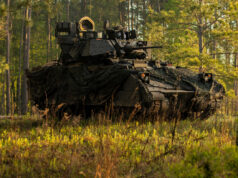



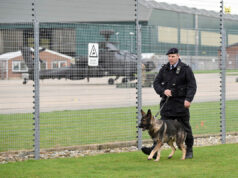

Private briefing. So MoD still won’t discuss NATO targets.
Which I understand they did previously.
As for 1 star ranks and above. I’ve no issues with it. They’ve been reduced on several occasions just like force levels.
Interesting that they focus on readiness and resilience while ignoring that the forces are too small. Assume it’s cheaper for HMG to settle on that, rather than address wider size issues alongside munitions stocks.
More integrated is spin that has been used in other reviews, and hey presto, JFC.
Making CDS in charge of MSHQ with the 3 service chiefs is an increase in integration where exactly? They already were across MoD Main Building across multiple directorates and ACGS, and already are in PJHQ and at CJO.
Pure deck chair shuffling spin for me.
In regards to NATO targets it’s not surprising as there’s nothing to gain with publicising commitments at the moment and risking scrutiny, the general public isn’t that interested so best not to give new headlines that will be negative.
The first option is that at best the targets remain unchanged, targets which already could not be met for the Strategic Reserve Corps previously agreed, not even close. Now there may be more of a push to actually meet this target.
Another option would be that the commitment was reduced to something more realistic (it should be, better to know what allies can actually provide rather than fantasy fleets on paper and revisit when things have improved), the potential outcome of this would be not even meeting the lower target, this would be odd at a time when more is being expected of other alliance members rather than less.
The other option I can see is that more has been agreed to at the previous summit, despite the inability to meet the current/previous targets. The inherent need for grandstanding to claim leadership roles could have forced additional commitments whilst other countries were stepping up their own commitments. Announcing this with the issues meeting the current level of commitment would not look good and look like the usual empty talk.
Daniele, this MSHQ was supposed to have been set up by the end of 2024, to be ready to implement SDR. I don’t think it has been set up yet! Where is it? Is it to be a suite of offices in MoD MB? Where is the staff coming from? How many? Any vision or mission statement? Is there an Org Chart of this HQ?
It doesn’t fill you wth confidence that 7 months on from its supposed creation we know nothing about it!
Hi Graham.
I might be wrong, but I don’t expect you’ll see a new HQ stand up like PJHQ did in 96, with fanfare and visits by dignitaries. An actual physical entity.
( shown in a Defending the Realm Episode, FM Inge, DS Portillo and all. )
MSHQ to me is a virtual rewiring of part of the Main Building Organisational Diagram, nothing more.( Head Office and Corporate Services.)
Same offices. Same people. Same assets.
But they’ll make a big thing of it as CDS now is more than a figurehead but involved in direct oversight.
A bit like the DCMO and NARO. ( Defence Crisis Management Organisation and Nuclear Accident Response Organisation.)
They exist, but from pieces of other organisations brought together as needed. Apart from DCMC of course. They are not actual intact entities.
All spin for me Graham. So far, this government has more of it than the last, and that’s saying something.
Putting CDS above the defence chiefs is a usual government reaction. If you can’t figure out why it’s going wrong, put someone in charge you can blame. They vicerally believe that extra levels of governance help, even though they pontificate about about how slow things are, and how difficult to wade through the red tape. I can hear them talking diasapprovingly about 11 people checking one person’s work. Nevertheless, they love to add another layer every time there’s reform. Levene has failed, so let’s integrate by adding a layer or two. You can watch the appropriate episode of Yes Minister to get a clear explanation of why the senior Civil Service welcomes the idea, so there’s never any pushback there. Real integration happens at a lower level.
I’ve suggested this before: typically even brigade operations are multi-domain and certainly anything bigger. So give 1*s cross-domain experience amd make all two star positions and above non-domain specific: not Army, Navy or Air Force. Most are administrators anyway, and all should all belong to HM Armed Forces, with cross-domain responsibility, uniforms and titles to match. (Cap badges to be ceremonially burned, new baptismal names optional). That’s how to bring leadership together at levels lower than CDS. Not by sticking them under a non-donominational top boss (which would be the King, anyway).
Jon, multi-domain operations were always run by PJHQ. No need for MSHQ to do this.
Exactly. Said it since this nonsense surfaced.
PJHQ is now subordinate to CJO and StratCom but it is still purple.
That’s not new.
The United States Marine Corps, almost exactly the same size as Britain’s entire armed forces, but with more aircraft, have 62 officers of one star and above.
Not a fair comparison, as you compare armed forces size.
Fine if our 1 star were only in armed forces positions.
But they’re not.
As our 1 star and above are found right cross the MoD, which supports the 3 services. The USMC wont be supporting the length and breadth of defence related organisations on its own, that our 1 star are assigned to, as there will be thousands of other 1 star from the USN, USA and US Army across the DoD.
I wonder as a percentage of total regular military personal, how it compares with other nations.
It feels like a high number when compared to the total number of front line infantry, but that isn’t really a valid comparison especially not these days when more and more capability is in a support style role.
Steve, the size of the forces is only an arbiter for how many senior officers are required in the Field Force ie the deployed or deployable part of HM Forces. A great many senior officers are required in a huge variety of Defence Diplomacy, Head Office, non-deployable HQ and Organisations.
Even Tesco will have more senior managers than it has stores.
I didn’t make any comparison. Readers far better informed than I are quite capable of drawing their own conclusions.
While the United States Marine Corps is not a completely separate branch, it is a distinct component of the Department of the Navy with its own chain of command and representation on the Joint Chiefs of Staff.
The USMC is legally part of the Department of the Navy, along with the US Navy.
The Marine Corps has its own command structure, headed by the Commandant of the Marine Corps, who is responsible for organizing, training, and equipping the Marines.
The Marine Corps operates as a combined-arms force with its own aviation, ground, and logistical elements.
The Commandant of the Marine Corps serves on the Joint Chiefs of Staff, representing the interests of the Marine Corps.
Even the most patriotic Brit might concede that 472 one star and above is a big number in an organisation currently incapable of fielding a combined arms group larger than one Brigade.
Morning M.
No, because you’ve said it again in your last sentence, and as I tried to explain, not well I fear, I personally don’t see it like that.
Let’s put it another way.
The 62 USMC officers must run the entire DoD, including all the support areas including DIA, NRO, NSA.
All the other officers from other services are gone. I’m sure you’d agree it wouldn’t be possible unless organisations run themselves.
That the entire UK military is identical in size to the USMC thus isn’t valid as our 400 plus officers help run areas the USMC does not.
Similarly, reducing the entire UK military to just 62 1 star ranks would be impossible unless much of the MoD umbrella organisation is either thrown away or run by lesser ranks or equivalent civil service, and many here want them gone as well, without much if an idea what they do to keep MoD running and take ownership of multi million pound assets.
There is a simple answer. General Kellogg achieved a two day cessation of drone attacks in Kyiv simply by his presence there. Britain could send over to Kyiv a General daily in rotation over a year which would still leave us a hundred or so to do all that vital desk work (from home).
More seriously, the Milei chainsaw is required not confined to uniforms or the MoD but right across the overthinking silo’d self licking lollipop that is Whitehall.
I can’t remember the exact numbers but 360k personnel in 2019 grew to over 500k and requires a serious cutting back.
Monro, that sounds far too many for just a single branch of the US forces.
‘The Marine Corps has 2,700 Marines for every general officer, Mahoney said Tuesday in his testimony to a House Armed Services Committee subpanel examining readiness. The service has 64 general officers, including two four-star officers, he said. The number of active-duty general or flag officers is set by Congress. The cap is 219 for the Army, 171 for the Air Force, 150 for the Navy, 64 for the Marine Corps and 21 for the Space Force.’
Stars and Stripes 06 May 2025
General Officers are going to be cut from that figure by 20%.
For Britain to have a much diminished Royal Navy, an Army of capable of fielding one Brigade on extended operations and a Royal Air Force with a handful of fighters but 472 Officers of General rank does, most would admit, I think, look a little bit top heavy. That is no doubt why it takes so long to get anything done, not just a problem for the uniformed branches of MoD.
The 64 figure for USMC includes one star.
I tend to the view that more of our top military brass need to be specialised subject matter experts. I hate seeing how “high flyers” are put in to a completely new role every couple of years, e.g. Assistant Naval Attaché in Washington -> Captain of a destroyer -> Commanding Officer of a training establishment -> Head of the Future Mine Countermeasures Project -> Chief of the Naval Staff responsible for Naval Aviation. The broad range of experience may benefit the individual in their efforts to become a Head of a Service (e.g. 1SL), but not the individual commands which they are (briefly 24-30 months top) in charge off.
Certainly don’t cut senior Army ranks, ferrying them around is the only job Army Wildcat has, think of the poor pilots!
Pilot, singular or do we have more than one now, since the SDR?
That is the key point.
One star and above require staff.
Britain’s Ministry of Defence is clearly, to whatever degree, overstaffed. Cutting senior positions, civilian and military, reduces overall staffing levels and enables those that (might) remain to have better pay and conditions.